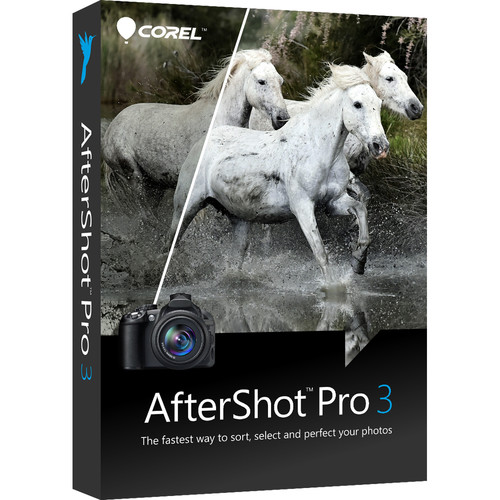

- #COREL AFTERSHOT PRO 3 CREATE A CUSTOM CAMERA PROFILE SOFTWARE#
- #COREL AFTERSHOT PRO 3 CREATE A CUSTOM CAMERA PROFILE OFFLINE#
Luminance noise occurs when the brightness of a color is affected instead of the color itself.
#COREL AFTERSHOT PRO 3 CREATE A CUSTOM CAMERA PROFILE SOFTWARE#
Using a quality photo editing software like PaintShop Pro in partnership with a RAW photo editor like AfterShot Pro, you will create a powerful photo workflow that can be optimized over time, so you spend less time in front of the computer and more time behind your camera. Be sure to keep lots of notes as you develop your own workflow, so you can come back and repeat the process or refine it for your next editing session. The main thing to keep in mind when editing is: Always make global changes (the ones that affect your entire image) first, then work your way down to local adjustments (the ones targeted at a specific area or region). It’s a very subjective process and will take time to really master. The following workflow is a suggested method to get you started down the path of developing your own process that work best for you. It’s important to remember there are all kinds of ways to post-process your images. Today, we’ll go through a basic photo editing workflow designed to get your RAW photos ready for a pixel editor, where your final edits will be done. OK, first things first… A photographer’s workflow is both personal and customizable. Otherwise, you might make adjustments and then notice on export that everything is washed out and colored wrong. Make sure your equipment is setup correctly - Make sure that your screen's brightness is turned all the way up and calibrated properly. Stick to the original image dimensions - Artificially scaling or adjusting your image will reduce the quality of your image.
#COREL AFTERSHOT PRO 3 CREATE A CUSTOM CAMERA PROFILE OFFLINE#
At a minimum, you should have a three-part backup system: A master working drive (your computer), A current backup (External drive), A Historical backup, (An offline drive that's kept ins a separate physical location). Having multiple backups can prevent the loss of hundreds of hours of work. It's not a question of if your drive will fail, it's when. Drop it and move on.īackup, backup, backup - This is one I can’t stress enough.

Ask yourself, “Can I make this image amazing?” If you can’t, it’s not worth it. There are almost no exceptions to this rule. Use them to adjust your exposure and compensation settings automatically so that you can concentrate on the fine tuning of each photo.īe Brutal - Keeping images that might be “fixable” is a waste of time. Other formats condense, convert, and degrade the camera information when it writes.Ĭonsider the end goal - Before you perform a single edit on an image, you should have a clear understanding of your desired finished product.Įstablish a good workflow and use batch editing - Using software presets upon importing can help you save enormous amounts of time. When you shoot in RAW format, your camera is writing all of the data to your card. Shoot in RAW - When working with images, your end goal should always be to deliver the highest quality image. Keep these tips handy and you’ll be on your way to a professional-level workflow in no time! Be intentional about each image you take and always keep the end product or goal in mind.

Remember, capturing an incredible photo starts long before you click the shutter… and no amount of post-processing can turn a bad picture into a great one. Quick Tips to Maximize Your Photography Successīefore we dive into the nuts and bolts of developing your photo editing workflow, there a few things you should always remember so you can set yourself up for success (or just skip right to the workflow). You can get a slimmed down version, known as AfterShot, with PaintShop Pro Ultimate or, for a limited time, collect your fully-licensed copy from the Corel Discovery Center. RAW files, process hundreds or even thousands of photos in seconds, and then convert them to a universal format (like TIF or JPEG) that you can bring into your pixel editor.ĪfterShot Pro is the industry’s fastest RAW editor, giving you a powerful one-two punch when it comes to perfecting your photos. With a program like AfterShot Pro, you can open your camera’s Today, most mid to high-end cameras capture images in both JPEG and RAW – the camera maker’s own proprietary file format (you can learn more about the differences between RAW and JPEG here ).These RAW files must be decoded before they can be used so, the second editor you’ll want to consider is something specifically for RAW conversion, file management, and workflow.


 0 kommentar(er)
0 kommentar(er)
